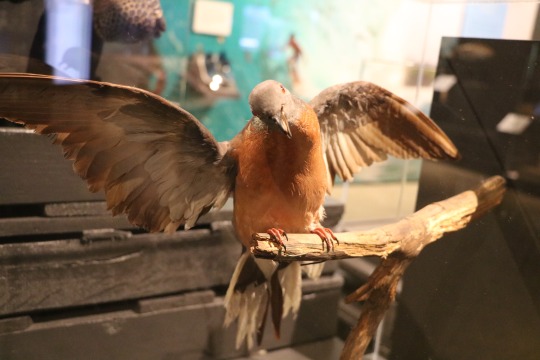
Memories of an extinct species sometimes serve as a tragic reminders of ongoing human-driven damage to nature.
Carnegie Museum of Natural History’s exhibition We Are Nature: Living in the Anthropocene includes an exhibit about the passenger pigeon, which went extinct a century ago. The exhibition—which includes specimens from the museum’s hidden collection and interactive components—explores how humans are impacting the environment and animals in the Anthropocene—the proposed current geological era in which humans are making a profound impact on the geological strata
The passenger pigeons—the most abundant bird species in America in the early 19th century—were known for gathering in huge flocks. In fact, in 1810, Alexander Wilson—a Scottish-American naturalist and ornithology pioneer—described the flock of pigeons he witnessed along the Ohio River “marking a space on the face of the heavens resembling the windings of a vast and majestic river.” In 1813, renowned naturalist John James Audubon recorded a pigeon flight over the Ohio River that eclipsed the sun for three days.
In 1871, an estimated 136 million passenger pigeons covered an area of Wisconsin the size of 15 Pittsburghs geographically – their biggest nesting site. Sadly, a single gun dealer there sold more than a half million rounds of ammunition to about 100,000 hunters over the two-month nesting season, leaving some 1.2 million birds dead. The bird population was decimated. Close to three decades later, the last wild passenger pigeon in Ohio was shot. In 1914, the last of the species – a captive bird named Martha – died at the Cincinnati Zoo.
John Rawlins, head of the Carnegie Museum’s Section of Invertebrate Zoology, said in Carnegie Magazine in 2014 that natural history collections like ours play a critical role in researching the preservation of species.
“When emergencies happen in the environment, when an invasive species strikes, when there is a need to understand why a species is either reproducing too much or going extinct, it basically comes down to the need for information and context,” Rawlins said. “And often that need is relatively rapid.”
The Anthropocene is the current geological era in which humans are making a profound impact on the geological strata. While the term itself is still being debated by geologists, the museum is embracing it as a social and cultural tool for exploring the broad sum effect humans are having on the planet in the exhibition We Are Nature: Living in the Anthropocene—open now through summer 2018.
